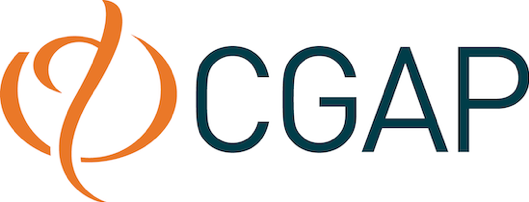CGAP’s Open APIs Program: Revolutionizing Financial Inclusion in Developing Regions
/Since 1995, the Consultative Group to Assist the Poor (CGAP) has made poverty reduction its core mission. Comprised of 30 development organizations, leaders recently unveiled an ambitious new program. That effort is focused on lifting underserved groups out of poverty. This particularly applies to under-represented women in the tech and business sectors.
In our latest case study, we’re taking a deep dive into CGAP’s Open APIs Program. Aimed at encouraging financial inclusion in developing markets, the organization is targeting developers and entrepreneurs to promote global betterment. Financial tools in these regions are lacking and underutilized. This problem is especially prevalent in South Asia, East Asia, Africa, and Latin America. CGAP’s goal is to foster financial security for some of the world’s most-disadvantaged citizens.
We connected with Mark Boyd and John Musser, two key minds behind CGAP’s Open APIs Dashboard. A Writer-Analyst at Platformable, Mark assesses the relationships between APIs, digital-technology adoption, and socioeconomic inequality. As the Founder and CEO of both ProgrammableWeb and API Science, John is accustomed to developing scalable API solutions based on open standards. Each is uniquely qualified and brings immense value to CGAP.
As external contributors to the CGAP project, both find great satisfaction in connecting individuals to opportunities via APIs. We’re thrilled to share their experiences and explore CGAP’s technical foundations.
Background and Challenges
The problem facing the Open API Program begs the following questions: what issues are these disadvantaged citizens encountering, and how can we create a fiscally-conscious climate? In developing regions, technological infrastructure is lacking on both the commercial and consumer sides. CGAP states that over 1.7 billion people worldwide don’t have a bank account. Accordingly, citizens don’t have safe places to either store or grow their wealth over prolonged periods of time.
Even when people have access to financial tools, they don’t always take advantage. This creates unique challenges. Only 33% of registered accounts are used every 90 days, and 72% of monetary transfers occur face to face. Developing economies currently operate in traditional ways. Women face even greater barriers to entry economically, dealing a blow to financial inclusion. Consequently, many people with savings accounts choose not to use them. This problem is magnified when institutions fail to provide quality offerings.
Furthermore, economies in developing regions revolve around agriculture. While growing crops, resources are finite and need replenishing. Fertilizer and tools are essential. Equipment maintenance is another necessity. Farmers not only need to earn a living, but they must be able to invest back into their business in order to be successful. Spending money is key to making money, and these individuals struggle without proper financial management.
Many financial woes in the market are due to poor awareness. Developers and companies have difficulty discovering useful tools and APIs. Traditional, closed-source solutions are often costly or unavailable in a given region. This makes app development tricky and counteracts many incentives to doing so. For the growing API economy to take off, we need to make these benefits apparent. Consent, payment, and data-access APIs will allow developers to create feature-rich digital tools.
Solutions: Open API Program and Dashboard
For John and Mark, one thing was clear: we need to create better data-driven tools to present to developers and institutions. Many in South/East Asia, Africa, and Latin America actually have some amazing open APIs available to them. The issue is visibility. A working solution was soon born. Humans are visual creatures, especially when it comes to consuming data. A viable solution must be informative and easy to follow. The Open API Dashboard was created, and as the project matured some key questions were soon raised:
How do we hunt down the pertinent data to display and verify its accuracy as best we can?
How can we determine valid, representative samples from a larger group?
What do we display and how do we display it?
How can we incentivize developers to create new financial apps?
Data collection and visualization are challenging, and even the most scientific studies rely on minor leaps of faith. The Dashboard had to clearly display regional facts and figures. It had to provide legitimate examples of apps and other tools stemming from open APIs. Perhaps most importantly, it had to show which APIs are currently available to developers. Digital Financial Service (DFS) providers open up these APIs for use.
Naturally, some of these providers have a stronger presence – or developer mindshare. For example, PayPal is much more ubiquitous than Paga or Flutterwave. However, that doesn’t necessarily mean its APIs are ideal for a given project. It’s up to developers to make those determinations, and the Open API Dashboard arms them with pertinent information.
Mark and John acknowledge the challenges of building a comprehensive dashboard, and are continually refining methods, data sets, and breadth of information offered. As more data surfaces, they update the Dashboard accordingly. This commitment to providing current information keeps data as relevant as possible.
The dashboard is organized into sections:
DFS-related Open APIs by region
Examples of products and apps built using these DFS APIs
Which DFS providers are developers familiar with (mindshare)?
What types of apps and products are being built?
What communications channels are popular providers primarily using?
How are API providers monetizing their API products?
Infographics accompany each of these sections, making it easier to digest key information at a glance. These graphics are colorful, engaging, and provide contextual details on hover. There’s more to see than what’s offered at face value—many items also link to additional pages. The Dashboard is an excellent resource that many developers can draw from. This knowledge will spur increased development and innovation.
What are some quick takeaways from the Dashboard?
More companies are offering an increasing quantity of open APIs to actors in developing regions. Year over year, these trends are promising. India offers the largest number of DFS-related APIs with 22. PayPal, PayMaya, and Omise have the largest developer mindshare by a wide margin. The vast majority of apps are UX based, meaning they’re focusing on displaying transactional and loan information in a clearer way. Most providers communicate via blogs and FAQs. Most APIs provide developer-paid access, though there are a fair number of free options. As a special note, Mark believes these paid options will not present significant barriers to entry for developers and financial institutions.
However, this data is always evolving. As more DFS-providers join the fray, market shifts are expected as mindshare changes. Above is only a snapshot of what the Dashboard offers. As such, we encourage all developers to look closely and assess granular facts and figures.
The vast majority of apps are UX based, meaning they focus on displaying transactional and loan data in a clearer way. However, developers are also creating digital money-lending resources, savings apps, ticketing apps, and other e-commerce services. Open APIs connect third-party services to account information, facilitate loan transfers and payments, and promote the growth of mobile small businesses. Increased access to micro-loans allows new businesses to hit the ground running, while improved tools help debtors manage their credit. Previously, these tools were nonexistent or rudimentary at best.
—————————————
So, we have these apps and services available, but how does that translate to the customer? For one, research shows the DFS industry’s success has relied on customer-adoption rates. This is problematic. While there’s a theoretically-infinite number of transactions that customers can make, only so many people can adopt a new service. At some point, that service reaches saturation. API providers that provide tools need to make them as accessible as possible. We’ve given people digital tools, but quality has been lacking. The Open API Project gives developers a clearer path to development, success, and sustainability. In turn, customers will benefit.
That creates another potential quandary for providers. Providers face obstacles in revenue generation. How’s this countered? Though a developer may not pay fees, DFS providers can pass micro-fees onto consumers with each transaction. That really emphasizes the path to DFS growth—increased transactions. These small fees add up. If even a portion of those 1.7 billion people without accounts participate in the digital economy, DFS providers stand to benefit. If app developers craft experiences that are simple, enjoyable, and accessible, transactions will multiply accordingly. That incentivizes providers to remain in the market and draws more.
That said, how can people access these services? Mark Boyd describes the technological trend in developing regions as something of a leapfrog effect. Contrary to popular belief, cell phone ownership is quite high in these regions. People have foregone laptops for mobile devices. Most of these devices aren’t smartphones, but that’s less of a barrier than you might expect. Furthermore, this geographical freedom promotes exactly the kind of economic growth DFS providers desire.
Unstructured Supplementary Service Data (USSD) systems were designed exactly for this scenario. GSM global networks power these systems and most mobile carriers. Owners may send texts to applications on the network and interact with them in this way. This allows for easy transfers and payments. Developers who harness open APIs can create their own mobile services. These services can even be implemented natively within cell-phone menus, streamlining access.
Accessibility and API expansion will encourage massive growth in the digital economy. That growth will legitimize digital tools and leave customers better off. Furthermore, financially-secure individuals will invest back into the economy, aiding expansion.
The Greater CGAP Mission
This all shows an immense amount of promise, but how does it tie into CGAP’s overarching mission? According to the organization, farmers in Malawi with deposited savings have “spent 13 percent more on farm equipment and their crop values rose by 15 percent.” Not all households are headed by males, either. Women can access these API-driven services with greater ease, whereas traditional methods are less fruitful. CGAP reports that matriarchal households in Kenya have boosted their savings by over 20% by using money-management services.
CGAP aspires to drive the developing world forward with the United Nations Sustainable Development Goals in mind. Increased wealth leads to increased opportunity. That includes better access to education, healthcare, food security, and more.
CGAP’s mission, supported by the Open API Program and Open API Dashboard, is based on a five-year plan. This period extends from 2018 to 2023. The mission’s goals are as follows:
Creating value for poor customers, especially women and other excluded segments
Building sustainable business models that deliver financial services to the poor at scale
Developing the enabling infrastructure to connect people to financial services in a digital world
Fostering a policy environment that supports innovation while protecting consumers
The Open API Program is a powerful catalyst for realizing this change. We’re even seeing providers create incubators for startups and award development scholarships. The financial world is a largely-untapped frontier in developing regions. We’re thrilled to see how Mark Boyd, John Musser, and CGAP apply lessons learned elsewhere to help alleviate global poverty. With DFS providers in tow, that powerful alliance holds incredible promise.
Without a doubt, developers have endless opportunities to extend open services to new customers. Harkening back to our statistic regarding bank-account use worldwide, developers may still introduce roughly 23% of the global population to useful tools. This has massive potential to not only generate revenue, but boost socioeconomic well-being.
These markets are emerging and untapped. While institutions move slowly, DFS developers can rapidly introduce useful services and move the financial needle. With the help of the Open API Program, we’ll be able to boost prosperity while knocking down financial barriers.
(Preview image courtesy of Ouch)




